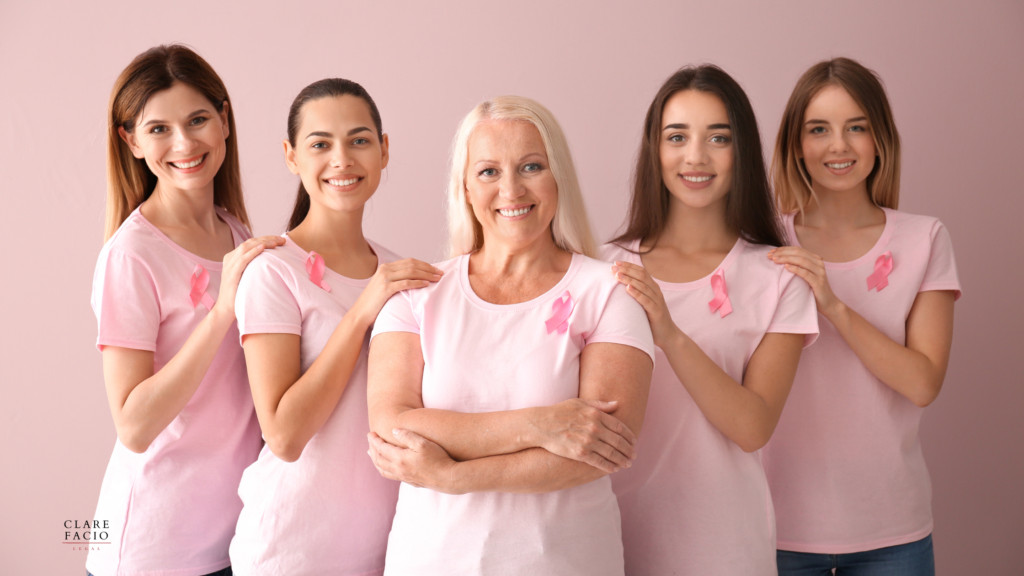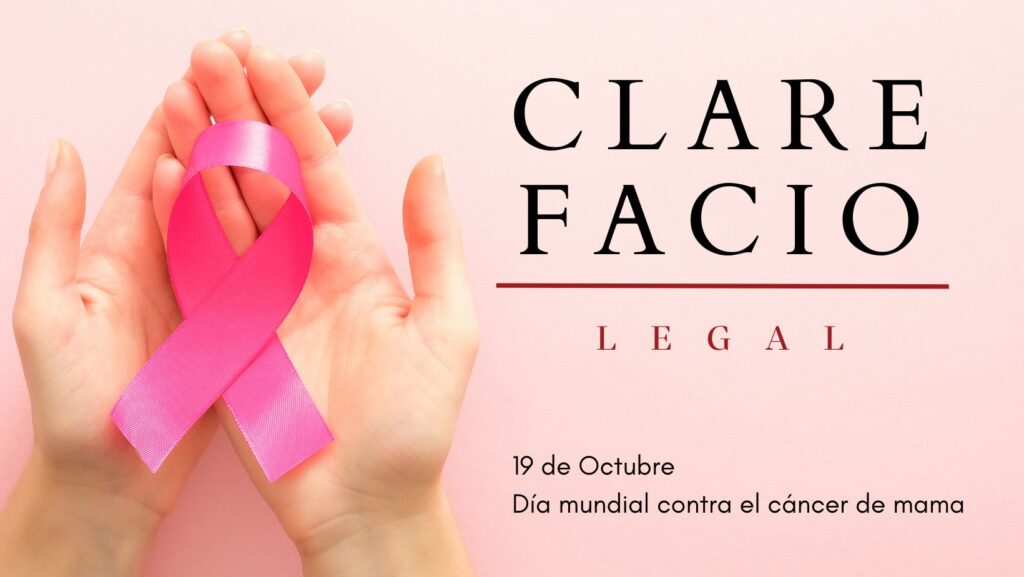October 19 is the World Breast Cancer Awareness Day, a disease that annually claims the lives of thousands of people around the world. It is in this scenario, that the law firm Clare Facio Legal decides to join the awareness campaigns about this disease, not only internationally, but with a particular focus on Costa Rica.
The fight against breast cancer is a task that requires a collective effort to promote early detection and ensure the necessary support for those facing this disease. Clare Facio Legal, being an actor committed to the welfare of Costa Rican and international society, joins this cause in order to contribute to the construction of a healthier and more supportive future.
Some facts about breast cancer.
Breast cancer represents one of the most common types of cancer in the world. According to data from the World Health Organization (WHO), about 2.3 million new cases are diagnosed each year. According to the World Health Organization, in 2020, approximately 685,000 people died from breast cancer worldwide.
In Costa Rica, the panorama is no stranger to this global reality; breast cancer is the most frequent type of cancer among Costa Rican women. In our specific context, between 1,300 and 1,500 new cases of breast cancer are registered annually, which is equivalent to about four new diagnoses per day. In addition, it should be noted that between 0.7% and 1% of these cases occur in men, that is, between 10 and 12 men are diagnosed with breast cancer each year in the country.
For its part, the Ministry of Health through the Directorate of Health Surveillance, recorded 416 deaths from breast cancer during 2021, representing a decrease of 2.6% compared to 2020 where 427 deaths were recorded.
55% of the deaths from breast cancer registered in 2021 were in the 40 to 69 years age group. The province with the highest breast cancer mortality rate is Cartago, with 18.44 deaths per 100,000 women.

Risk Groups:
The main risk factor for breast cancer is female gender. However, between 0.5% and 1% of cases of this disease affect men. Despite the gender difference, the principles of treatment for breast cancer are consistent for both men and women.
Several factors can increase the risk of developing breast cancer, including advancing age, obesity, harmful alcohol consumption, family history of breast cancer, previous exposure to radiation, reproductive history (such as age at onset of menstrual periods and age at first pregnancy), tobacco use, and postmenopausal hormone treatment.
Notably, about half of breast cancer cases are diagnosed in women who have no identifiable risk factors other than being female and over 40 years of age.
Although a family history of breast cancer may increase the risk of breast cancer, most women diagnosed with breast cancer do not have a known family history of the disease. The absence of a known family history does not necessarily imply a lower predisposition to breast cancer.
In terms of genetics, certain inherited mutations of high penetrance can substantially elevate the risk of breast cancer. The most prevalent mutations are found in the BRCA1, BRCA2 and PALB2 genes. Women who carry mutations in these critical genes may consider risk reduction strategies, such as bilateral prophylactic mastectomy.
Indicators and Manifestations: Breast cancer may reveal itself through various symptomatic manifestations, particularly in advanced stages. In the early stages, most people will not experience noticeable symptoms.

Manifestations of breast cancer may include:
- Presence of a lump or thickening in the breast, which is usually not painful;
- Alteration in the size, shape, or appearance of the breast;
- Emergence of dimpling, redness, cracks, or other changes in the skin of the breast;
- Change in the appearance of the nipple or surrounding skin (areola);
- Abnormal or bloody discharge from the nipple.
It is highly advisable for people who discover an unusual breast lump to seek medical attention, even if the lump is not painful.
It should be noted that most nodules detected in the breast are not cancerous. Treatment of cancerous breast lumps is most effective if the lumps are small in size and have not spread to adjacent lymph nodes.
Breast cancer has the potential to spread to other regions of the body, generating other symptoms in the process. Commonly, the lymph nodes in the armpit are the first location where dissemination can be identified, although it is feasible to have affected lymph nodes that are not detectable.
Over time, cancer cells can migrate to other parts of the body, including the lungs, liver, brain and bones. As they reach these areas, new cancer-associated symptoms, such as bone pain or headaches, may emerge.

Observation and Prevention of Breast Cancer:
Observation and prevention are two fundamental pillars in the fight against breast cancer. Early diagnosis can make a significant difference in the treatment and prognosis of this disease.
- Breast Self-Examination:
- It is vital that women and men become familiar with the normal appearance and texture of their breasts. Performing monthly self-examinations can help identify any changes or abnormalities, such as lumps or thickening.
- Mammograms:
- Mammograms are a crucial tool for the early detection of breast cancer. Experts recommend that women begin having annual mammograms at age 40, or earlier if they have risk factors.
- Regular Medical Consultation:
- Regular medical screening, including clinical breast examinations by a health professional, is crucial for early detection.
- Healthy Lifestyle:
- Maintaining a healthy lifestyle that includes a balanced diet, regular exercise, and avoidance of smoking and excessive alcohol consumption can help reduce the risk of breast cancer.
- Awareness of Risk Factors:
- Knowing and understanding personal risk factors, including family history and genetic factors, can help in making informed decisions about breast cancer surveillance and prevention.
- Genetic counseling:
- For those at high genetic risk, genetic counseling can provide valuable information on prevention and early detection strategies.
- Education and Awareness:
- Promoting breast cancer education and awareness in the community can contribute to early detection and greater understanding of the disease.
Prevention and proactive observation are essential in the fight against breast cancer. Adopting preventive measures and being aware of any changes in the body can significantly contribute to improving survival and quality of life for those facing this disease. Clare Facio Legal, by joining breast cancer awareness campaigns, seeks to encourage these essential practices and support the ongoing fight against this prevalent disease.
At Clare Facio Legal we call for solidarity and action. It is critical that both men and women get regular screenings, as early detection can be crucial to successful treatment. In addition, it is vital that, as a society, we provide the emotional support and resources necessary for those who are battling breast cancer.
The firm urges other players in the legal and business sectors to join this noble cause, reiterating its commitment to the health and welfare of the community. Awareness campaigns are a powerful tool to generate positive change, and Clare Facio Legal is proud to be part of this global and local movement for health and solidarity.
In this month of breast cancer awareness, Clare Facio Legal wears pink, symbolizing its support and commitment to this transcendental cause. It is a moment of reflection, action and union, values that this law firm supports and actively promotes in its daily work.








